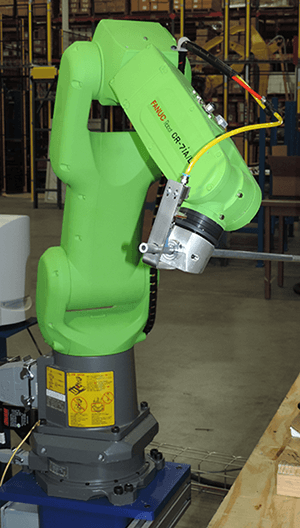5 Ways Collaborative Robots Benefit Your Business

Industrial manufacturing robotic automation technology has been around in varying forms since the 1960’s. It was in the mid-90’s that General Motors funded extensive research to develop robots that could work in collaboration with humans. Since that time, collaborative robots have become a highly advantageous option for performing a diverse range of manufacturing operations.
Innovations in the development of robotic technology have continued to make collaborative robots a dependable and efficient form of automation, serving process needs in a host of industries. Many of the perceived problems with industrial manufacturing automation, such as high cost of operation, have been resolved with collaborative robot technology. Collaborative robots offer a smart alternative to traditional workcell automation by providing robotic benefits with an extremely high level of flexibility in implementation.
Remtec has targeted experience in the development of a variety of collaborative robot applications, using the industry’s best robotic technology. The following are just five ways our collaborative robots can benefit your business:
- Safe Collaboration
Collaborative robots are specifically designed to work with humans, so they are subject to rigorous safety testing. Collaborative robots can perform operations that may cause health complications for people, such as continuous lifting or repetitive manual tasks - Easy Programming and Handling
New technological innovation has lead to highly flexible and customizable control for collaborative robots. Collaborative robots can be controlled and production data can be collected, using one integrated control system, developed to work with your process. - Proven, Repeatable, Reliable Technology
In applications where human error can create problems, robots can effectively take over and complete tasks without making mistakes. In typical robotic applications, human workers set up the robots with the necessary parts and robots do the rest of the job. If human intervention is required, either the entire production operation needs to be put to a stop or it is a long wait until the machines finish the production. In a collaborative robot set up, humans work with robots in the same workspace, therefore efficiency is greatly increased. - Intelligent Features like Vision
Innovative robotic vision inspection technology can be incorporated into collaborative robots. Vision technology is adaptable and offers the advantage of increasing productivity through optimized process up time, elimination of quality slips, and reduced rework. - Small Controller/ Small Footprint Design
Collaborative robots can be designed to work in a variety of work areas, including plants and facilities with limited space. Not only do the collaborative robots feature a small footprint, the controller is also small in size for maximum design flexibility.
Collaborative robot applications include one or more of four basic operation features: Safety-Rated Monitored Stop, Hand Guiding, Power and Force Limiting by Design or Control, and Speed and Separation Monitoring. In many cases, collaborative robots can be fenceless if a proper system risk assessment is conducted. The goal of some applications is to allow the operator to freely work with the robot, in which case collaborative robots are well suited for the task. In the case of force limited collaborative robots, integrated technologies and design assure the human process participant is protected.
Remtec has extensive experience in the development of a variety of collaborative robot applications, using the industry’s best robotic technology. We can assist you in developing a robotic automation solution that meets your needs, goals, and budget. If you are you interested in learning more about collaborative robot applications, contact us to discuss your project.
